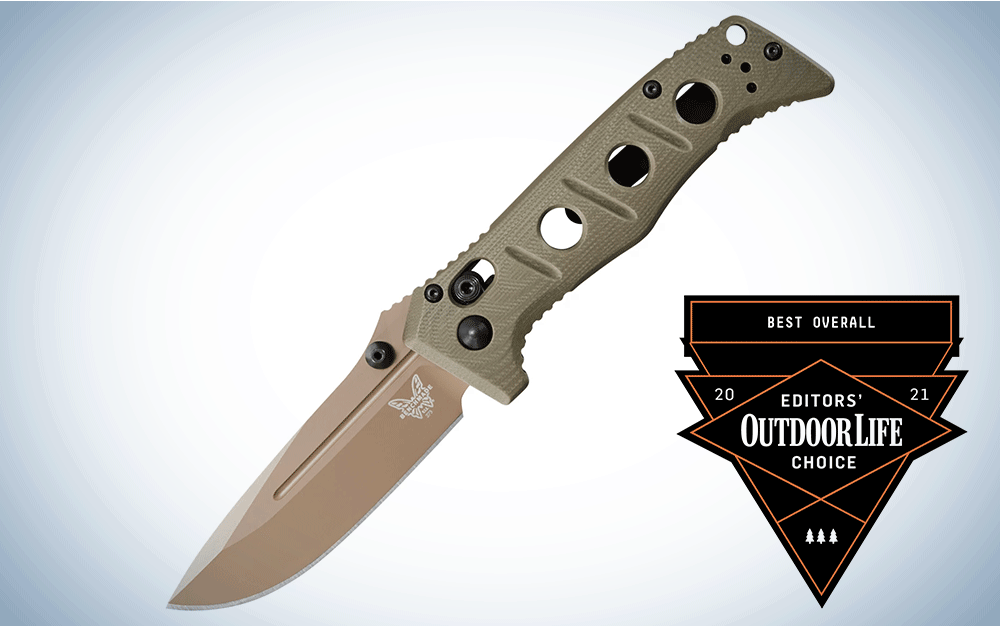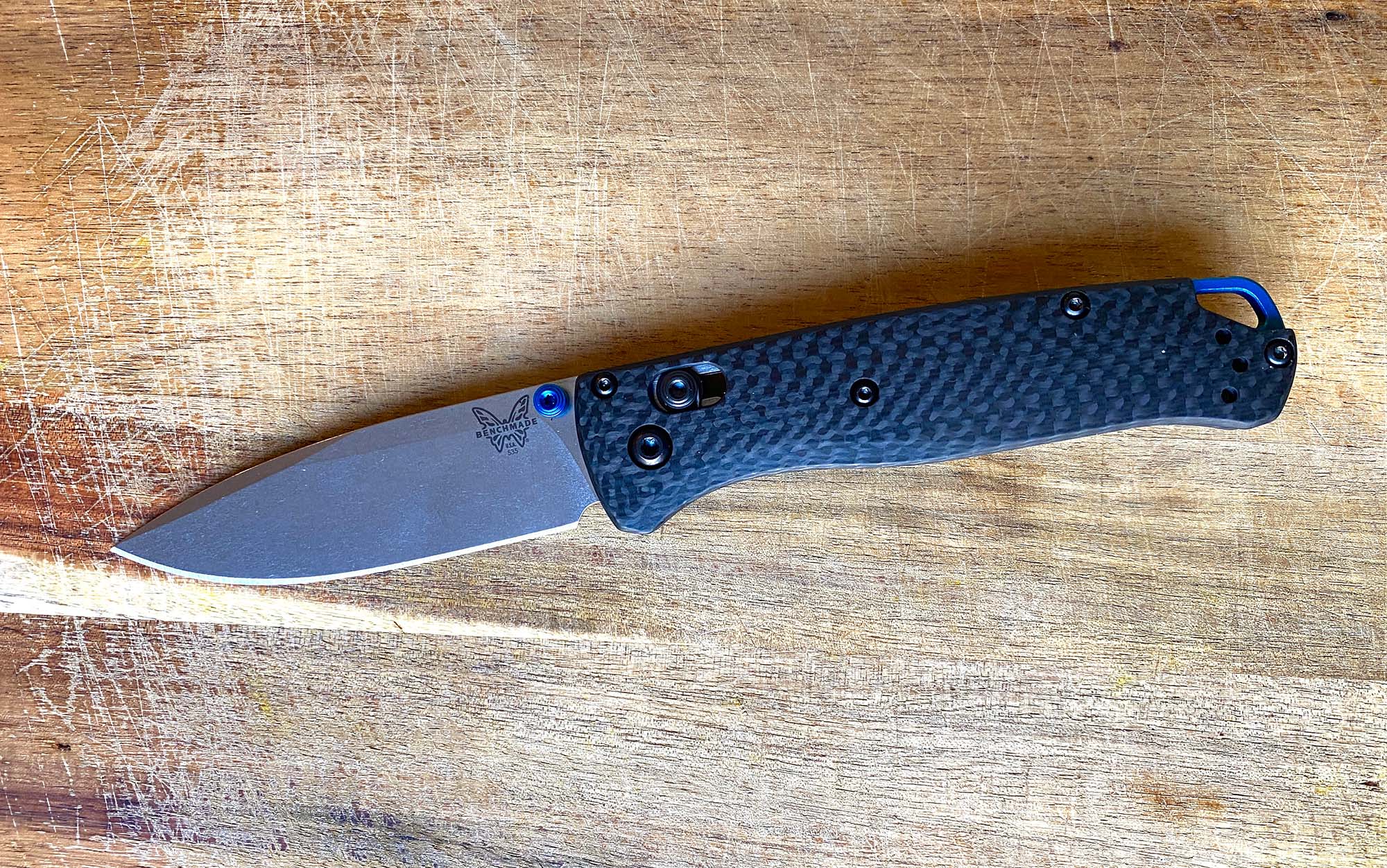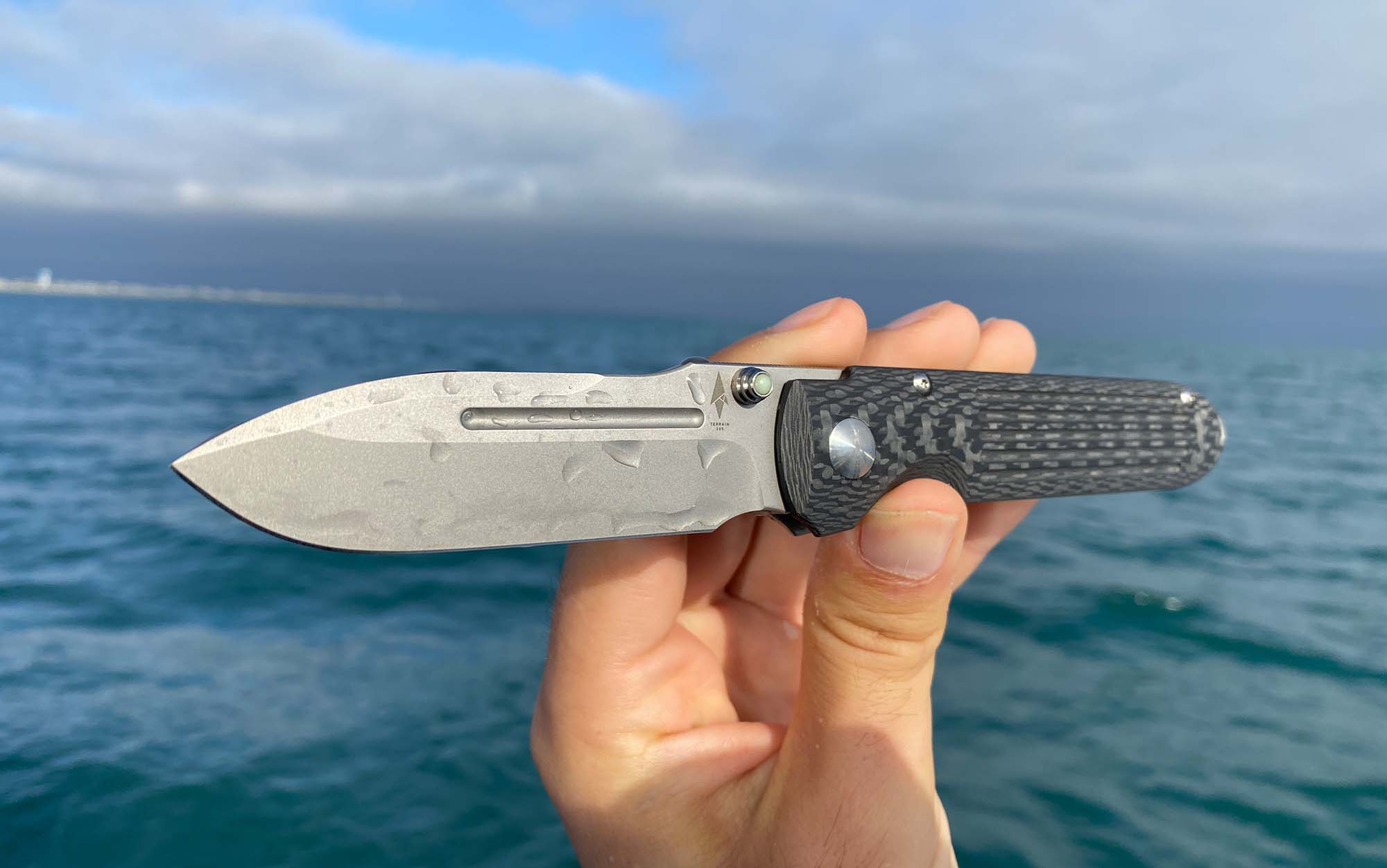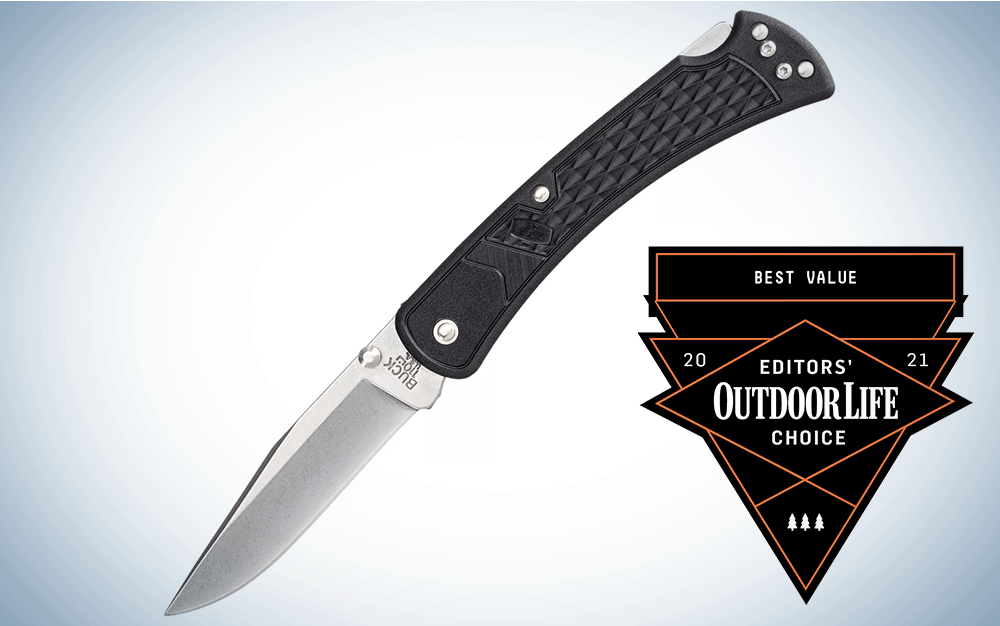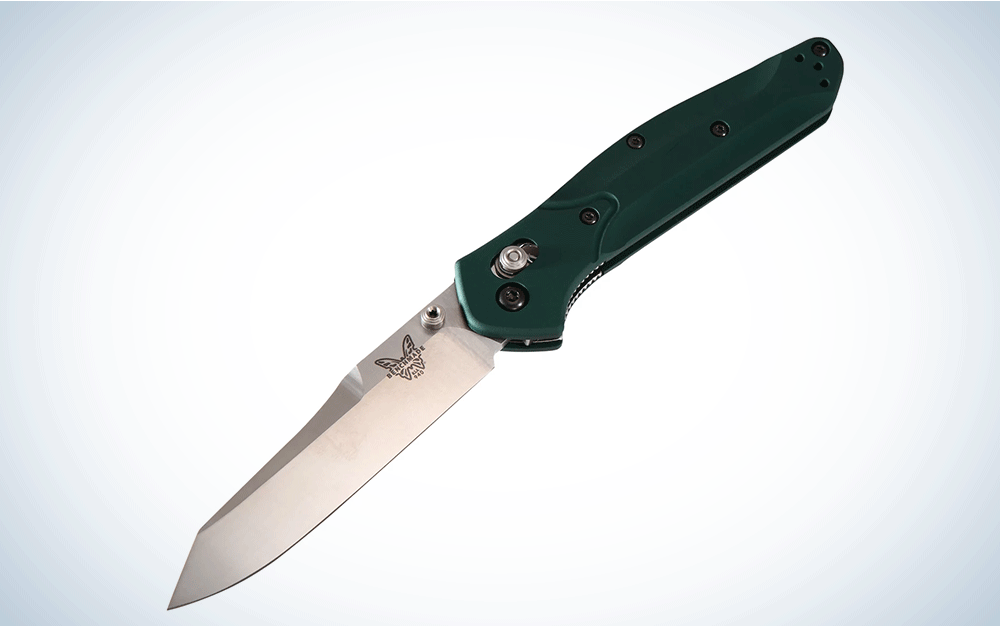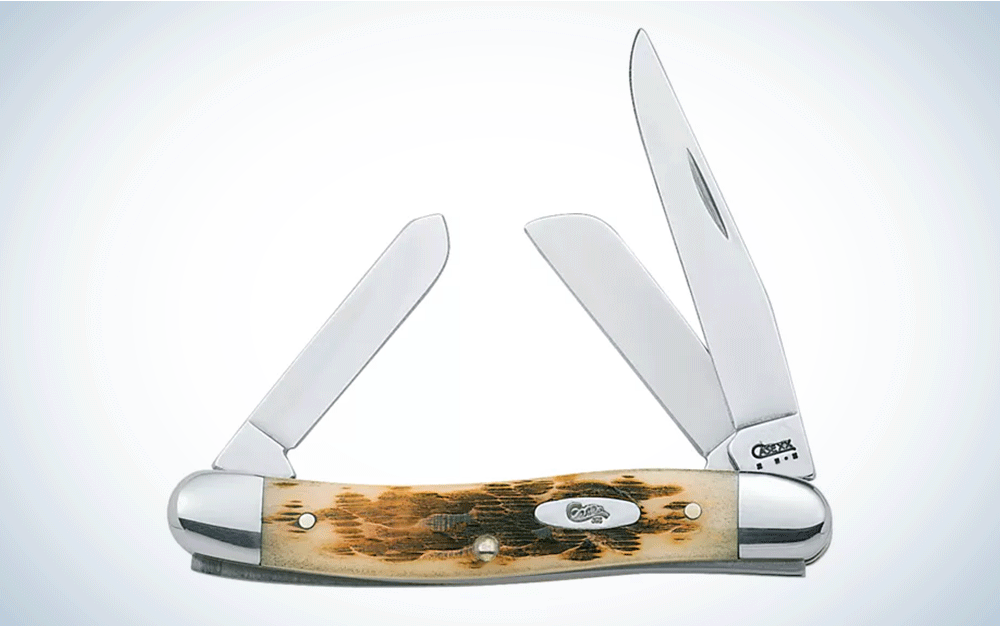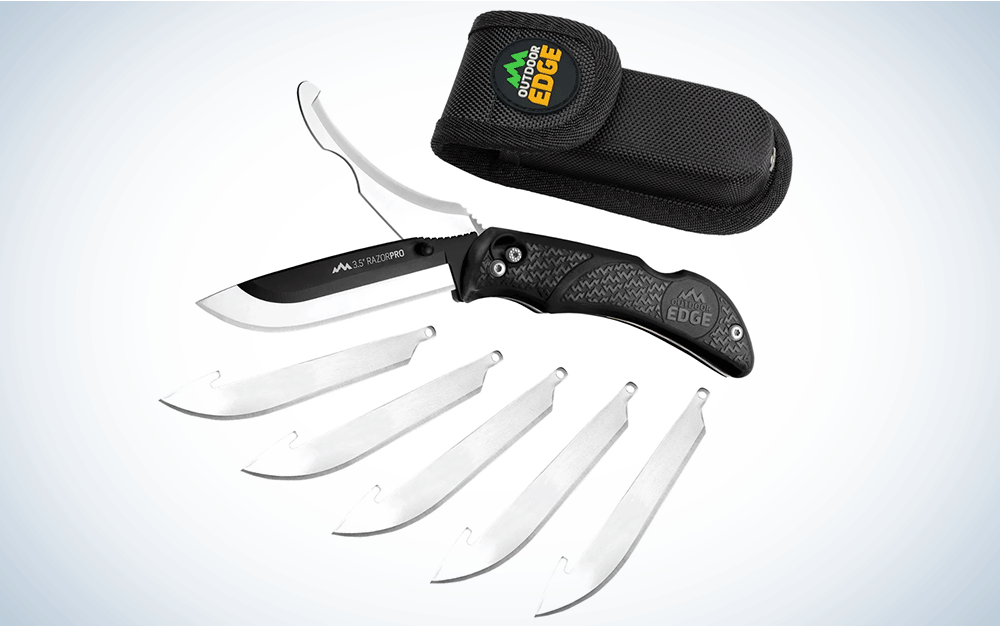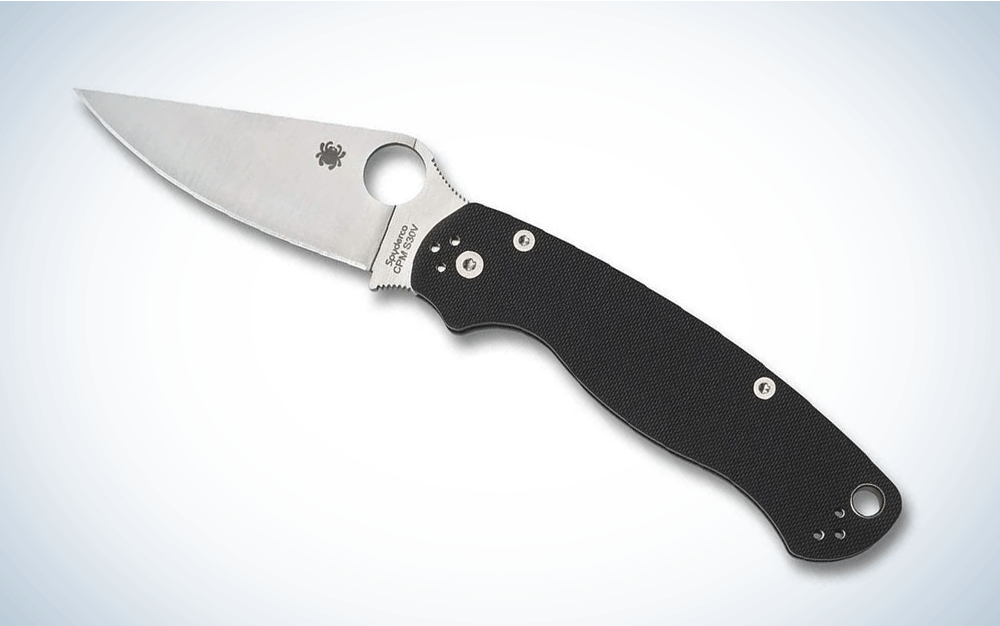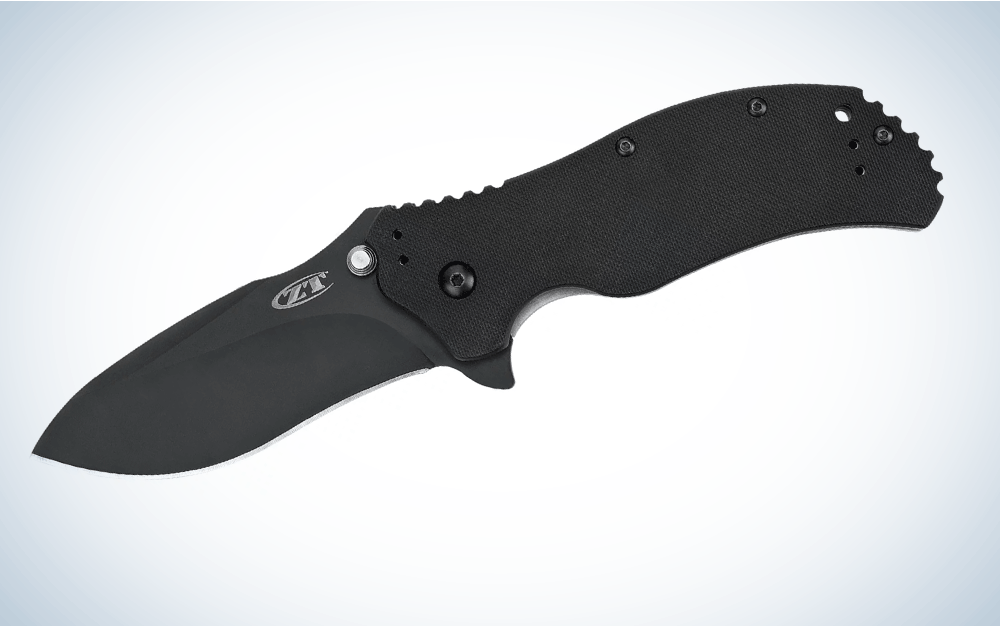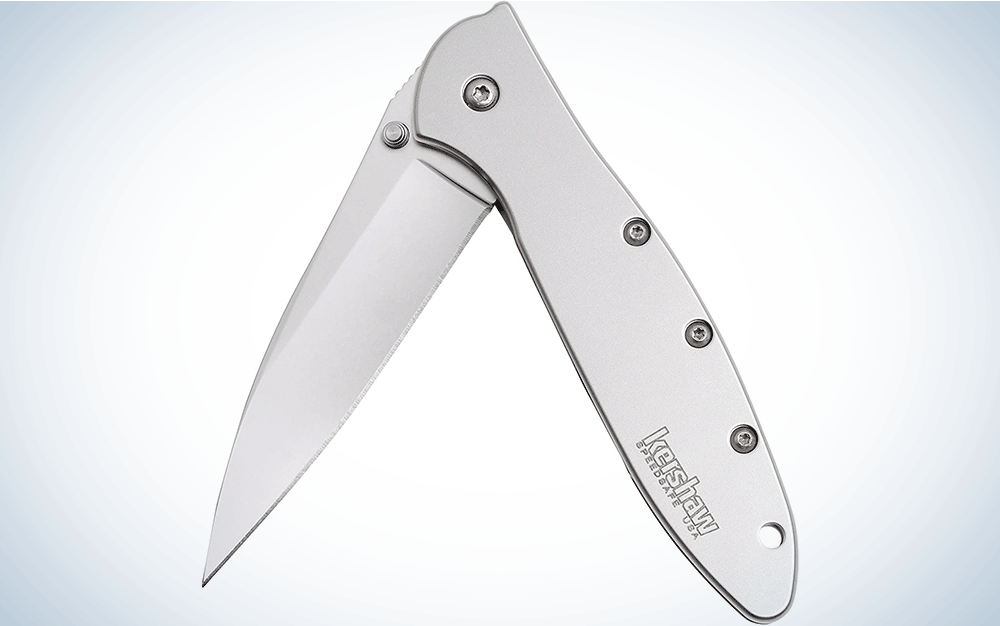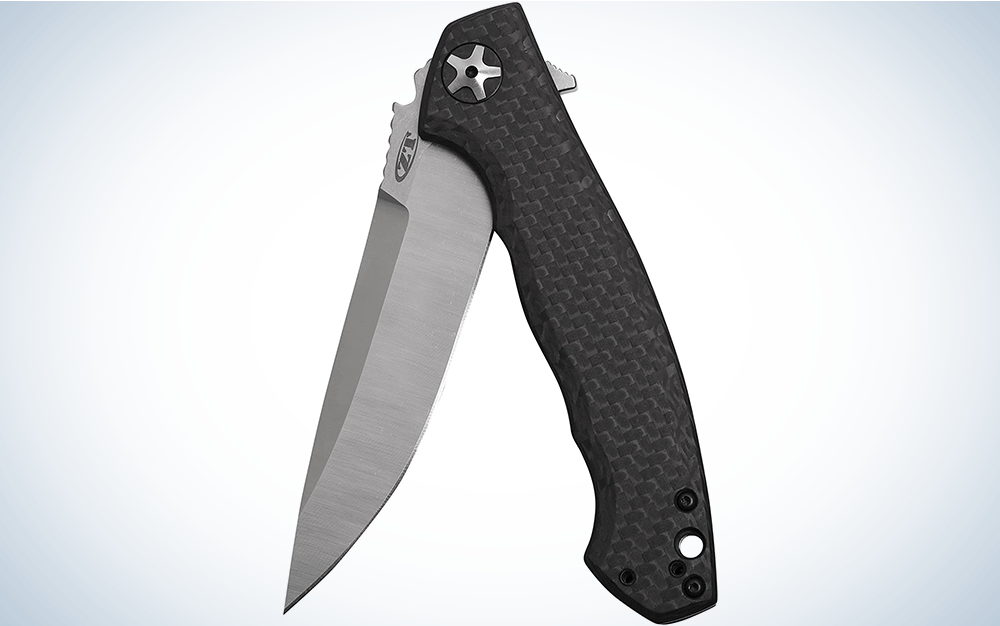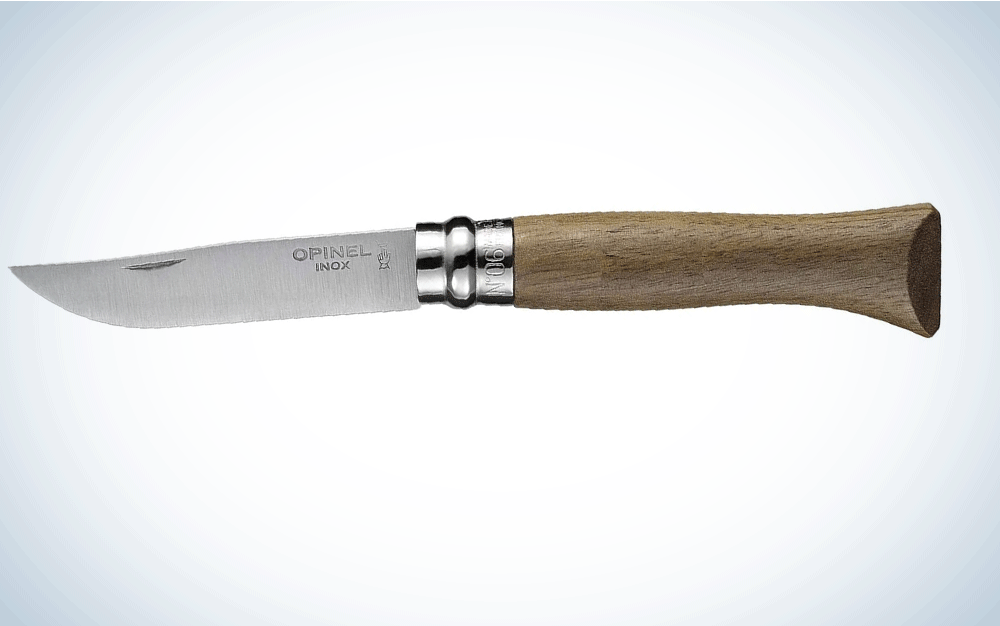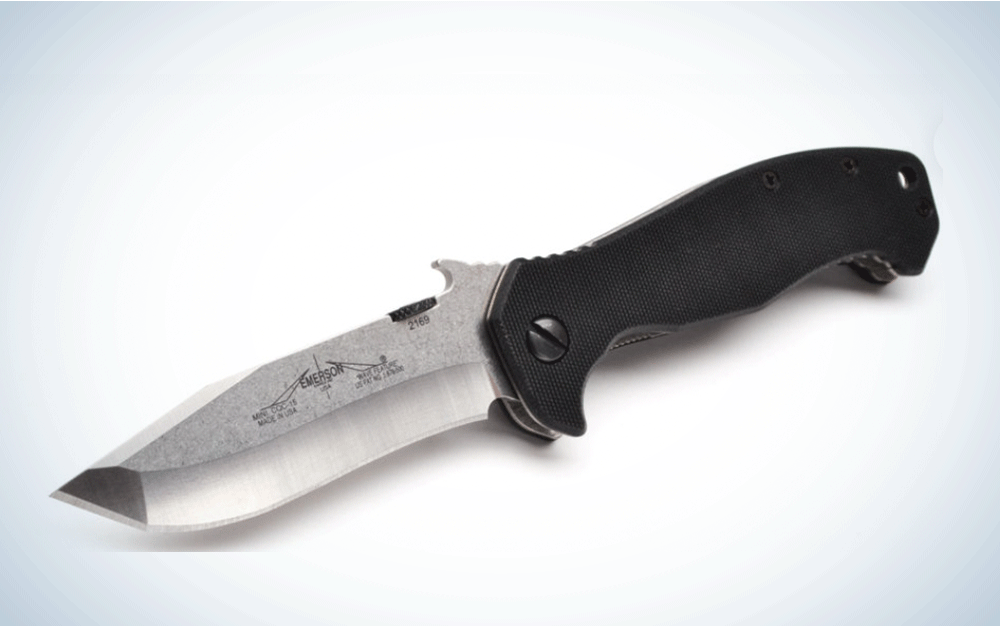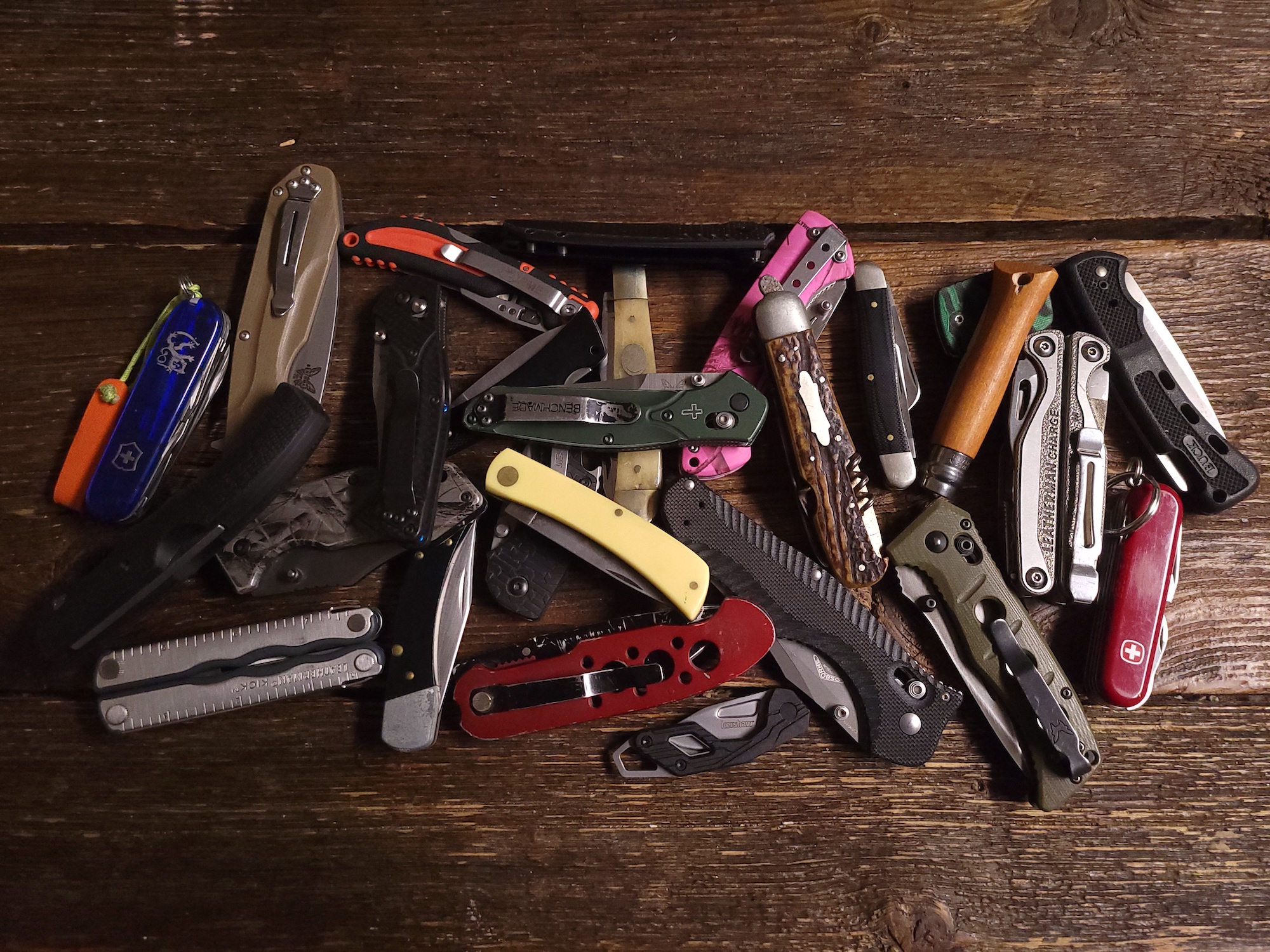
We may earn revenue from the products available on this page and participate in affiliate programs. Learn More ›
Updated Jan 31, 2023 7:02 PM
I’ve been lucky enough to own and handle many of the best pocket knives, including production and custom blades. Now, the Fifth Amendment protects me from self-incrimination, so I won’t say how many knives I currently own, or have owned, because it’s possible that my wife will read this. However, I will say that I have been a prolific purchaser of cutlery since I got my first knife at age 5. I even started a sharpening business years ago just to fund my “hobby.”
If you don’t want a drawer(s) full of knives and just want to find the best pocket knife for you, I’ve put together a list of the best pocket knives for a variety of users and uses. I didn’t randomly pick the following knives out of a hat. I’ve had many knives pass through my hands on the sharpening bench and in my collection, and have learned a lot about what makes a great pocket knife through hands-on experience. Nobody wants second-best anything, so here are my picks for the best pocket knives.
Key Features
- Made in the U.S.
- 3.3-inch drop point blade
- CRUWEAR steel
- Ambidextrous AXIS Lock
- 4.3 ounces
Pros
- CRUWEAR steel has an incredible blend of edge retention and resistance to chipping or breaking
- Drop point blade with generous belly is most versatile blade shape for EDC or hunting
- Built strong, but without the heft
- Good grip provided by a well-designed handle shape and well-placed jimping
Cons
- If the coating wears off, it’s possible to have corrosion because CRUWEAR is not considered stainless steel
The Benchmade Mini Adamas is a shrunken and updated version of one of Benchmade’s biggest and toughest folders, the Adamas. In the update, the Mini Adamas was blessed with CRUWEAR Steel, which is a great improvement. Benchmade also updated the full-size Adamas and sells both the full-size and the Mini.
The old version had D2, which isn’t bad by any measure, but doesn’t hold a candle to CRUWEAR. There was a lot of hype surrounding the release of the Mini Adamas, because people had been asking for a smaller version of the original, and I can say that the Mini Adamas lived up to the hype—and actually outshined it.
It’s my pick for the best pocket knife overall because it can do most things well. It excels in a hard use environment because of its good ergonomics, strong liners, and CRUWEAR blade. The blade shape is ideal for hunting and camping needs. And, it’s a nearly perfect size and feel for an EDC blade. Heck, this could even be a gentlemen’s knife if you went for the blacked-out version.
Key Features
- Blade Length: 3.25 inches
- Steel: S90V
- Handle: Carbon fiber
- Weight: 2 ounces
- Lock: Axis
- Price: $298
Pros
- Great edge retention
- Extremely light
Cons
- Some fit and finish flaws
The Benchmade Bugout comes in several trim levels, ranging in price from $160 to $540. The price fluctuates with the materials. If you want a super steel and carbon fiber, it’s going to cost you. But, all the models share the same blade shape, ergonomics, and locking mechanism.
The Bugout has a drop-point blade that puts the tip in the knife’s centerline. That feature makes it intuitive to know where the point is while you’re working. The belly has a gentle sweep, which is useful for a lot of cutting tasks. If I had to choose one blade shape for all my knives, the Bugout’s drop point would be it.
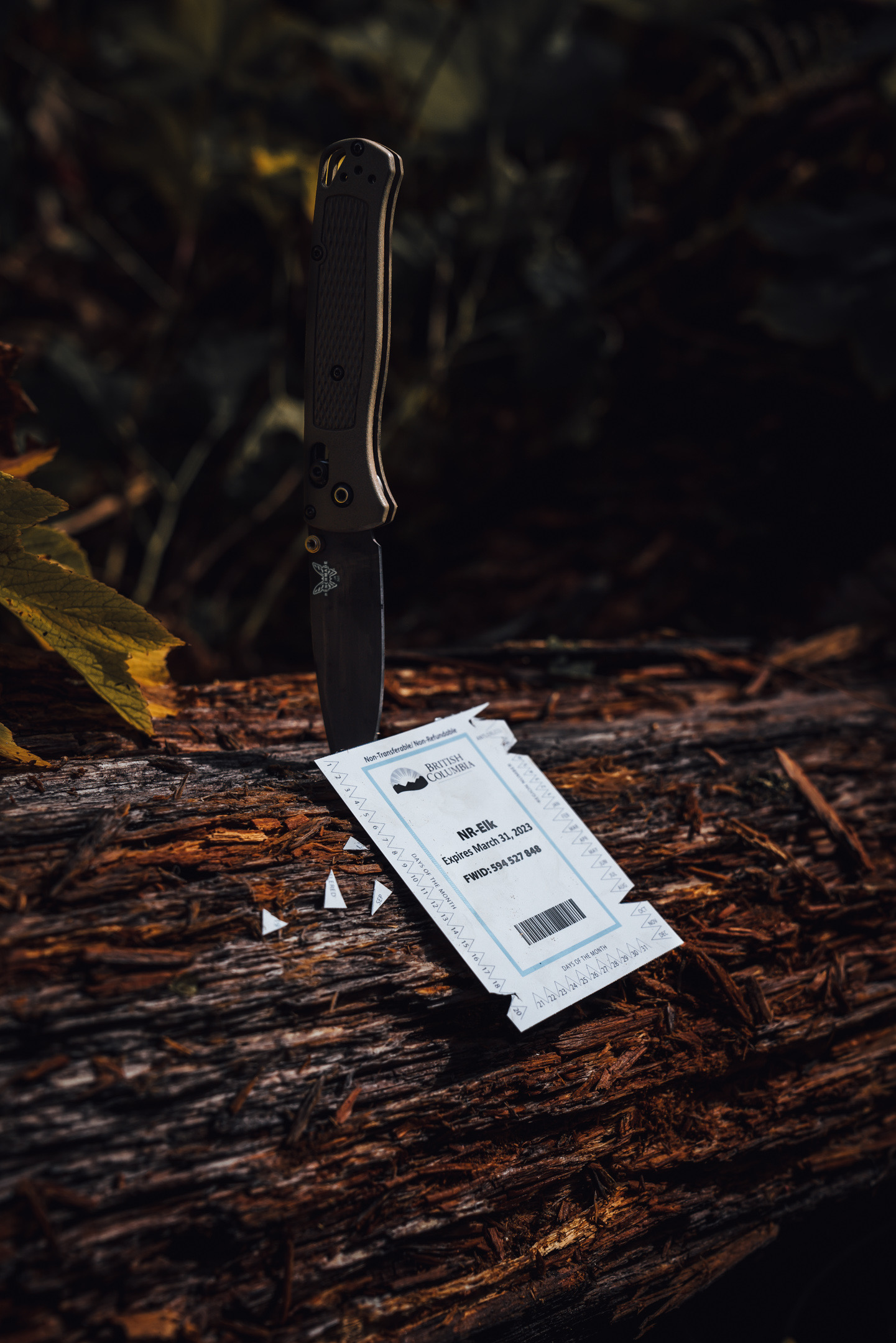
In a pinch grip or power grip, the Bugout is fantastically comfortable and the handle is deceptively detailed. The top of the handle has a slight drop from front to back. The bottom of the grip locks your index finger into place to prevent slipping and has just enough of a pinkie hook to give you extra grip. The pocket clip is reversible and the thumb studs are easy to hit with a thumb or middle finger. The axis lock makes one handed opening and closing a cinch. You can buy a Bugout with S30V, S90V, or M390 steel. All three steels are close in their toughness. M390 has the best corrosion resistance, S90V has the best edge retention, and S30V is the most affordable. -Scott Einsmann
Key Features
- Blade Length: 3 inches
- Steel: Terravantium
- Weight: 3.7 ounces
- Lock: Framelock
- Price: $380
Pros
- Will not rust
- Good edge retention
- Comfortable to use
Cons
- Detent is a little too strong
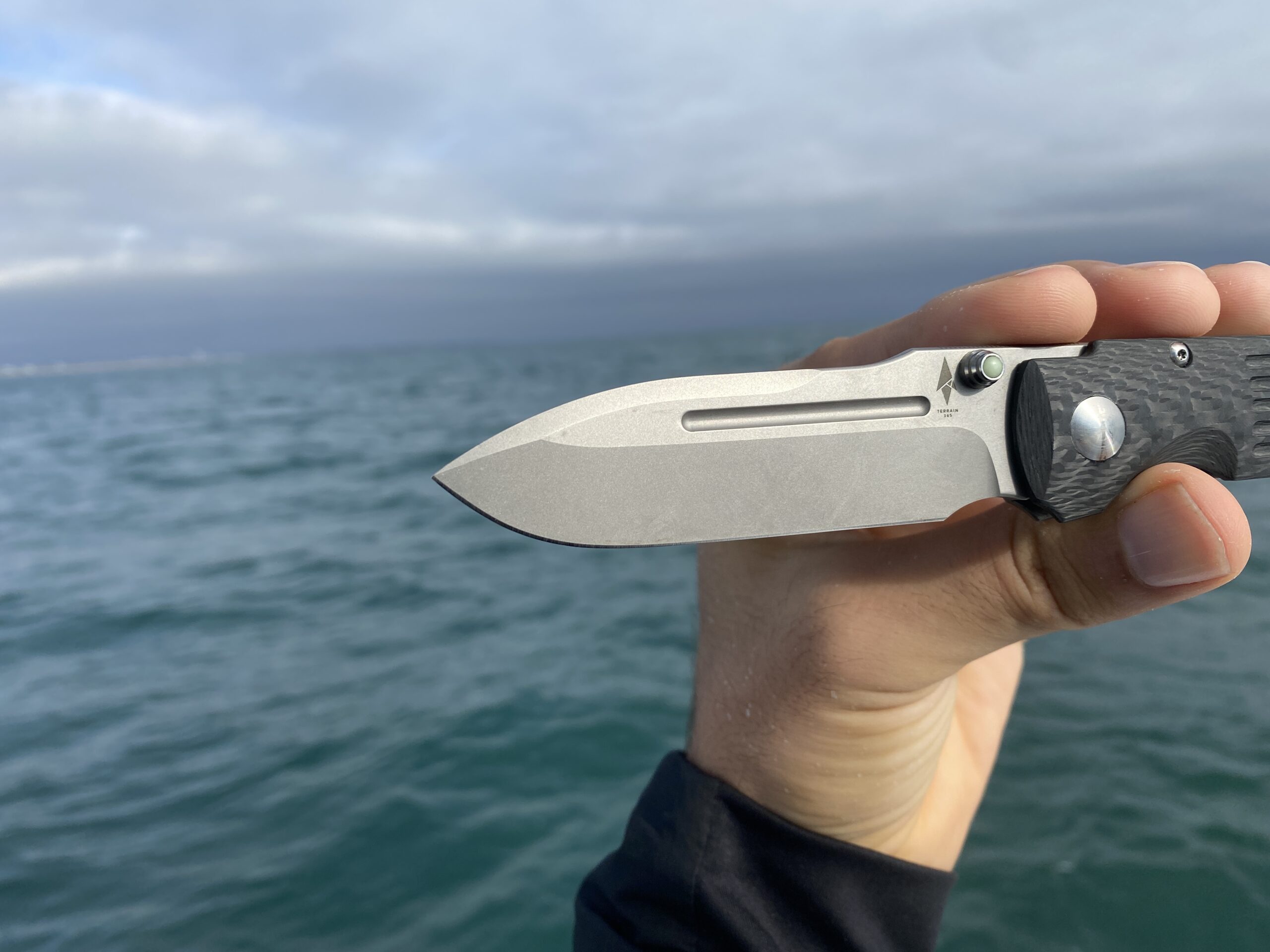
I’ve used my Invictus for EDC, hunting, and fishing this fall. I bought it because of its unique construction and I liked that every component of the knife is corrosion free. So whether I’m wet wading in saltwater or use it to field dress a deer, I don’t have to worry about rust. It has the bank vault click that’s a hallmark of a well made framelock and it rivals many midtechs for it’s fit and finish.
The blade steel used in the Invictus isn’t your typical blade steel, it’s not even steel. Terravantium is a cobalt alloy that doesn’t need to be heat treated. It’s also completely rust proof, non-magnetic, and keeps an edge for a very long time. Although I’ve found it doesn’t keep a razor edge long, it holds a toothy edge seemingly indefinitely. Mine has broken down hundreds of cardboard boxes without needing a touchup.
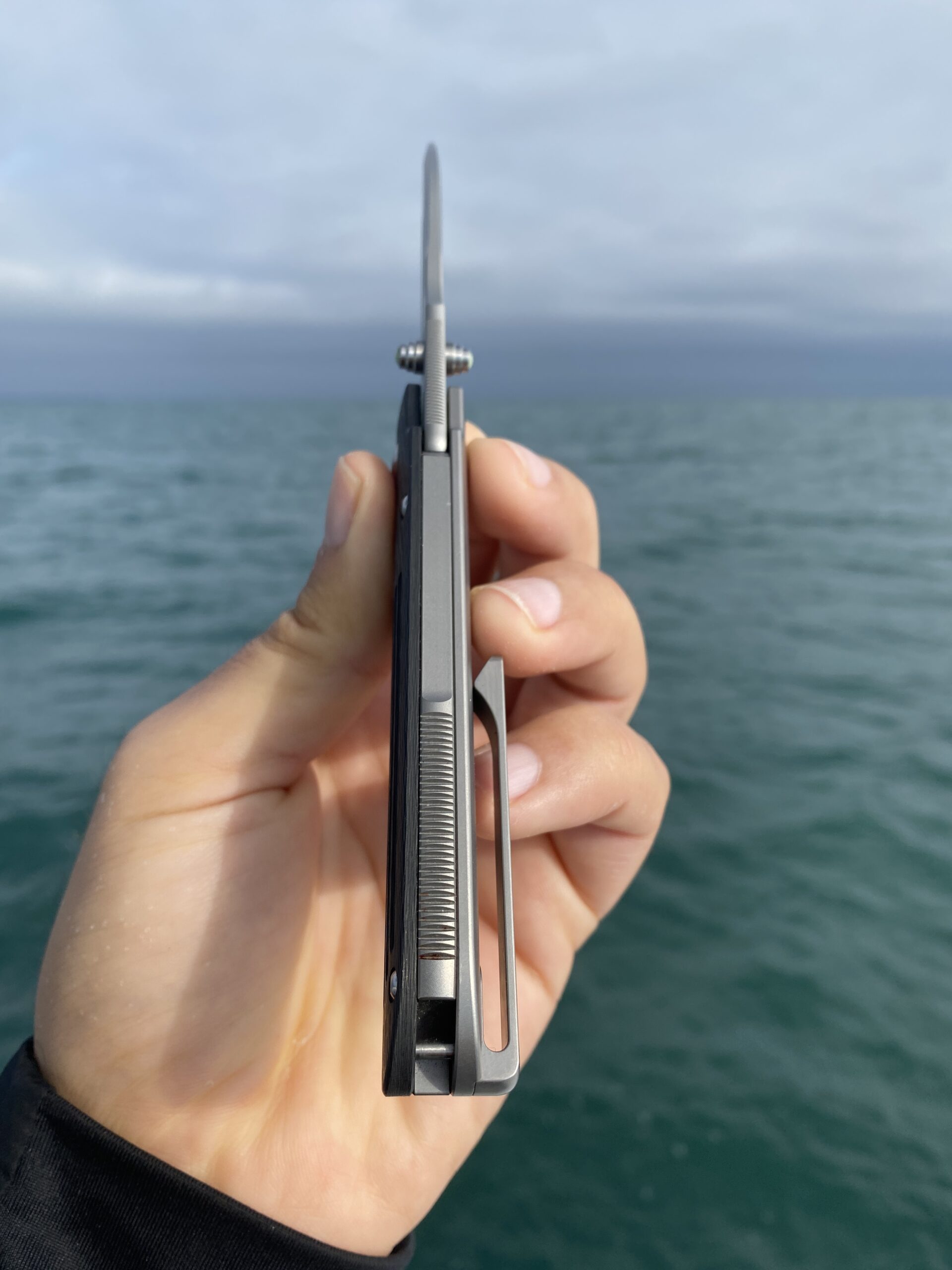
The spearpoint blade shape on the Invictus is ideal for piercing and slicing cuts. The slight distal taper reinforces the point and while I wouldn’t use it as a pry bar, it can take abuse. The ⅛ thickness is a good compromise between toughness and slicing. While the grip looks straight, it’s nicely contoured and has a deep finger choil for a secure grip in all conditions. Terrain 365 offers the knife with titanium, carbon fiber, micarta, and G10 handles. -Scott Einsmann
Key Features
- Made in the U.S.
- 3.75-inch clip point blade
- Stainless 420 steel with BOS heat treat
- Lockback
- Glass Filled Nylon (GFN) handle material
- 2.8 ounces
Pros
- Lightweight
- Left- or right-hand carry and opening
- Easy on the wallet
- Classic design
- Pocket clip and thumb stud are great updates to the Original 110
Cons
- There is some flex in the handle scales, but it doesn’t hurt performance
The Buck 110 Slim is a modern version of the Iconic Buck 110. As the name implies, it’s slimmed down in both weight and thickness from the original. It also has a pocket clip and a thumb stud for blade opening: both new features for the 110. One of the things I didn’t like about the original 110 is that it sat like a sideways brick in the bottom of my pocket. The 110 Slim has a nicely executed pocket clip that keeps it oriented and stationary in my pocket for easy, consistent access.
Buck kept everything people love about the classic Buck 110: It has a tried-and-true back lock design. The neutral handle shape with textured handle scales makes for a comfortable and secure grip in wet or dry conditions. The hollow ground blade is a real slicer. I love that Buck updated this knife and kept the manufacturing here in the U.S., which is rare for knives in this price category. If you’re on a tight budget but still want quality, it’s going to be very hard to beat this updated classic.
Key Features
- Made in the U.S.
- 3.4-inch blade
- S30V steel
- Ambidextrous AXIS lock
- Aluminum and titanium handle
- 2.9 ounces

Pros
- Top-notch warranty and customer service
- High-end materials in both handle and blade
- Easy to carry and quickly deploy
- Blade design gives a strong tip for hard work
- Smaller form factor makes carrying easy for any attire
Cons
- Finish on aluminum feels “chalky” until its broken in
I have referred to the Benchmade 940 Osborne as the “Mary Poppins of pocket knives” because it’s practically perfect in every way. This is obviously subjective, but many knife nuts share my opinion. Comfortable, easy to carry, nearly impossible to kill, and backed by a company that stands by their product. For example, if you manage to bend the clip, Benchmade will send you up to three per year free of charge. Most companies don’t match that. They will also sharpen it for free for life.
Its lock design makes it easy to use with either hand, even with gloves on. Add to that a long blade-to-handle ratio, and modest form factor in your pocket, and you have a winner. I have been beating on mine relentlessly for about eight years, and it shows no signs of slowing down. The Benchmade 940 was an easy choice for the best EDC Pocket Knife.
Read Next: Benchmade 940 Review
Key Features
- Made in the U.S.
- Blade shapes: Clip point, spey, and sheepsfoot
- Nail nick opening slip joint
- 2.5 ounces
Pros
- Three different blade shapes cater to almost any cutting task
- Wide variety of materials available
- Well built with a long, rich history
- Small enough to not compete for pocket space, but big enough to get the job done
Cons
- Blades don’t lock
- Two-handed opening
I love my modern pocket knives, but I still carry my traditional blades as well. My Medium Stockman has Black G-10 handles for a touch of modern, but the rest is all nostalgia. The best traditional pocket knife, the Case Medium Stockman has been around forever and proven itself to be useful and reliable on farms, in shops, at the office, and around the house for countless people over the years.
It’s available in many different handle materials to suit any style, and is the quintessential non-locking traditional knife. The different blade shapes are nice for different tasks, and the clip point blade might be the best splinter removal tool made. Although the blades don’t lock, the spring tension resists closing and keeps the blades securely shut. Many slip joints are more expensive, and many are cheaper, but Case hits the sweet spot for value and quality, and the Medium Stockman is one of their best patterns.
Key Features
- Made in China
- 3.5-inch replaceable main blade and 3.5-inch gutting blade
- Liner lock
- 5.67 ounces
Why it Made the Cut
The RazorPro is a purpose-built hunting knife with a strong gutting blade and a replaceable blade making it our pick for best pocket knife for hunting.
Pros
- Rubberized handle provides tons of grip even when wet
- Easily change blade with the push of a button
- Gutting blade effortlessly opens game up, and is great for initial skinning cuts
- Sheath and extra blades included
Cons
- Replaceable blades not as strong as a traditional blade
Product Description
I’ve tried several replaceable blade knives and have never really been a fan of them. That is, until I used a friend’s RazorPro. What won me over was the thick and strong replaceable blades that are supported by the holder almost out to the end of the blade. It feels much stronger, and handles much more like a regular knife, which is a huge plus for me.
The other thing that set this knife apart for hunting was the gutting blade. It has a recurve shape, with a rounded tip, which means no accidental punctures, and no having to straddle the blade with your fingers. The gutting blade is also perfect for unzipping hide down the spine and legs. Another plus is the rubber, nylon, and stainless steel construction makes for easy cleanup.
Read Next: Best Hunting Knives
Key Features
- Made in the U.S.
- 3.44-inch blade
- CPM-S45VN steel
- Proprietary compression lock
- 3.75 ounces
Pros
- Large and ergonomic handle
- Thumbhole opener is easy to access, versatile, and fun to flick open
- Forward finger choil allows for great control on delicate/precise cuts
- Lock design is stronger than a standard liner lock
- Available in many handle color/material and blade steel combinations
Cons
- Closed width makes it a pocket hog
- Compression lock difficult to use if left-handed

Product Description
The Spyderco PM 2 is an extremely popular EDC knife, and for good reason. This thing just plain cuts. Breaking down cardboard, food prep, opening packages, and most other everyday cutting tasks are a breeze.
While the Spyderco may be the best slicer, it loses marks for tip strength. If you tend to be rough on blades, you might want to look elsewhere. If you just use your knife to cut stuff, (you know, what it’s designed for) and don’t press your blade into use as a pry bar, the PM 2 should give you years of trouble-free use and enjoyment.

Aside from its razor-like qualities, another feature people like about the PM2 is its ergonomic handle that you can grip in several ways. The handle is curved with two-finger choils for an ergonomic profile, and the handle scales are flat pieces of textured G-10 over stainless steel liners.
There are two different hand positions when using the PM 2: Regular grip- all fingers on the handle, and choked-up, where you move onto the finger choil that’s integrated into the blade to get right up to the cutting edge for serious control.
As you shop for a Paramilitary 2, you’ll find it has loads of variations in both blade steel and handle colors. But your basic model has been upgraded to S45VN steel from S30V and keeps the high traction G-10 handle scales of the previous base model.
Key Features
- Made in the U.S.
- 3.25-inch drop point recurve blade
- S30V steel
- Extra thick liner lock
- 6.2 ounces
Pros
- Feels like a little tank in your hand
- Lots of traction with milled G-10 and jimping where you need it
- Opens with a flipper tab or thumb studs
- Drop point blade shape is useful and strong
Cons
- Feels like a little tank in your pocket
- Recurve portion of the blade takes a little know-how to sharpen well

The ZT 0350 gets the nod for the best pocket knife for hard use because it’s big and tough, but not so big and tough that it’s a pain to carry. This is about the best pocket knives, after all. There are bigger and stronger hard use knives, but the 0350 is the best blend of carry and toughness. I have owned three of these over the years, and I always liked them a lot. Pretty comfy in hand, and I never felt like I didn’t have enough knife for what I was doing.
The ergonomics are designed with hard use in mind. The flipper tab doubles as a finger guard to prevent slipping forward onto the cutting edge for stabbing or thrusting cuts, which is great for a hard use knife. The blade is fairly heavy and stout, so the spring assist makes deployment much faster and easier than others that are manual opening.
Even though this blade is strong all the way out to the tip, it’s actually a pretty good slicer. Most of the time, the really overbuilt blades are prybars with semi-sharpened edges. The 0350 manages to be tough while still functioning well as a knife. ZT has a solid warranty, but it’s doubtful that you will ever need to use it. This knife is made to take some punches.
Key Features
- Made in the U.S.
- Sandvik steel
- 3-inch Wharncliffe-style blade
- Liner lock
- 3 ounces
Pros
- Fast and reliable Speedsafe spring assist mechanism
- Compact design fits in any pocket
- Blade lock can be used to prevent accidental opening
- Can use flipper tab or thumb studs to open blade
Cons
- No option for left-handed carry
- Can feel a bit small for larger hands
The Kershaw Leek’s features make it the best assisted opening pocket knife. The blade is light, so it zips out lightning fast and with a satisfying snap. It’s everything that an assisted opening knife should be: fast, reliable, and safe. Another plus is the Speedsafe System that Kershaw uses does not qualify as an automatic knife, so it’s legal almost everywhere.
The Leek is compact, but feels solid, and is quite strong thanks to the stainless steel handles. The Sandvik 14C28N steel may be a bit of a tongue twister, but in my experience, Kershaw does a very good job on the heat treat and gets solid performance from this steel. Kershaw makes quite a few good assisted knives, and I almost chose the Kershaw Blur for this category, as it’s another fantastic assisted knife, but I am partial to the Leek’s styling and slightly faster deployment.
Key Features
- Made in USA
- 4.1-inch drop point blade
- CPM-S35VN steel
- Titanium Frame Lock
- 4.4 ounces
Pros
- Premium materials including titanium, carbon fiber, and powdered steel
- Super smooth action using caged ball bearings (KVT system)
- Comfortable ergonomics
- Way more blade than you expect
Cons
- Way more blade than you expect
- Right-hand carry only
The ZT 0452CF will spoil you with its super smooth ball bearings and perfect detent that give it an amazing flipper action. It will be hard to look at your other knives the same way after you flick this blade open. The stonewashed titanium and carbon fiber add good looks to the mix, and premium touches like a lock bar insert and milled pivots put this pocket knife over the top.
In hand, the 0452CF feels very nice and comfortable, and the blade shape lends itself to being good at nearly every EDC cutting task you will come up against. The first time you open this knife, you will be amazed at the blade length. My initial impressions were that it was a pocket sword. But it was also very controllable, and didn’t feel like a bigger knife.
A deep carry pocket clip keeps things discreet at the office, and no one will know you’re packing a blade that’s over 4 inches because the contoured titanium and carbon fiber help this disappear in pocket with a relatively narrow and slim form factor. And let’s face it: a gentleman should make a quiet statement, and this knife certainly does that.
Key Features
- Made in France
- 2.9-inch blade
- Stainless or carbon steel
- Easy-to-use lock
- Beechwood handle
- Only 1 ounce
Pros
- Rotating collar-style lock easy to use for smaller hands
- Wooden handle and frame can be painted, colored, carved, or burned
- Comfortable handle shape
- Inexpensive
Cons
- Carbon steel blade can rust if left out in the elements
Opinel makes a wide variety of sizes from around two inches all the way up to over 12 inches, but the No.6 is the “just right” size for a new knife user. The rotating collar lock (Virobloc lock) can be used to either hold the blade open or lock it shut. My daughters found that it was the easiest lock style for them to use. The lock on this knife does not automatically engage, which helps new knife users to slow down and think about everything they are doing. Also, fingers are never in the path of the blade while closing, which is a plus over styles such as liner and frame locks.
Let’s face it, sometimes kids lose stuff, and at well-under $20, you won’t be heart-broken if it gets misplaced. To avoid my daughter’s from getting misplaced, I drilled a hole in the back for a lanyard then attached it via a carabiner to her backpack. The Opinel No. 6 is super lightweight, customizable, comfortable, and easy to use, which makes it the best pocket knife for kids to learn on.
Key Features
- Made in the U.S.
- 3.5-inch blade
- 154CM steel hybrid tanto/recurve blade
- Titanium liner lock
- 4.5 ounces
Pros
- Wave feature on the blade catches the edge of your pocket to open the knife upon exit
- Chisel sharpened for easy field care
- Pivot adjustment can be made with a coin
- High traction milled G-10 handle scales
- The 154CM steel is relatively easy to sharpen, but holds an edge well
Cons
- Wave feature has potential to catch other objects in pocket and partially open, though rare
- Right-hand carry only—left-hand carry option costs additional $25 from factory
The Emerson Mini CQC-15 is the best tactical pocket knife that can pull double duty as an EDC blade. The “Wave” is Emerson’s signature feature. It catches on your pocket as you pull the knife out and automatically opens the blade.
The high-traction finish on the handle and deep finger choil/guard make for a very secure grip, but isn’t comfortable for prolonged use. Another signature feature is the chisel grind, where the edge bevel is only ground in from one side. The idea is that it could be sharpened on a rock in the field more easily than a traditional double-sided bevel. I haven’t tried sharpening it on a rock, so I can’t verify. The bottom line is that while many knives dabble in the tacti-cool realm, the Emerson is an actual tactical blade. There is a reason that the Emerson blades are popular in Military and LEO circles.
Read Next: Best Self Defense Knives
Things to Consider when Choosing a Knife
There is a lot to look at when choosing the best pocket knife in any given category. In the world of pocket knives, options range from $5 to $5,000. There are knives with blades that are under an inch up to nearly a foot. Blade steels range from barely better than a chunk of angle iron to the latest super-steels. Here are a few tips on how to sort through a variety of blades and find the right pocket knife for you.

The first thing you want to determine is what you intend to use the knife for. For example, a hard use knife has a much different intended use and environment than a kid’s first knife. One has to be able to pierce, pry, and have maximum grip, and one has to be light and easy to use and really only stand up to the abuse of whittling a stick. While considering how you’ll use your knife, realize that features come at a trade-off. For example, you can have a knife that slices well like the PM2, but it won’t be as durable as a thicker blade like a Benchmade Adamas.
Read Next: Best Survival Knives
Another big consideration is how easy the knife is to carry. For me, this is a big one. The shape and size of the knife, when closed, have the biggest effect on this. If I can’t get my hand past my knife to get other things in my pocket, that’s a real concern. Pocket clips also make a difference in how the knife rides and carries, and their designs are more important than you might think.
Finally, look at the blade steel. I have owned knives that performed and carried well, but the steel was lacking. That meant I was constantly sharpening it, or it was so hard and brittle that I was always fixing chips. Some steel is super easy to sharpen but won’t hold an edge, and some steel will cut forever, but take you an eternity to sharpen. The ideal steel finds a happy balance between the two. Also, avoid blades with ambiguous labels like “surgical stainless.” There’s a lot to learn about blade steels, but I think it’s worth the time investment.
FAQs
Q: How much does a pocket knife cost?
Knives on this list of best pocket knives range from less than $20, to well over $200. I have found that knives priced from $100-$250 usually offer the most for your money (with a few exceptions). You will generally get very good quality, good blade steel, well-thought-out design, good warranty, and a lot of trouble-free use.
Q: What is the best pocket knife steel?
This depends heavily on the intended use. Some applications require pure edge retention, while others favor steel with more toughness (resistance to breaking). For general use, S30V is a great steel that will hold an edge well, and will also sharpen up without too much trouble. It’s miles better than most blades steel out there, but it’s not a hard-to-sharpen and expensive super steel either.
Q: Is it illegal to carry a pocket knife?
Knife laws are sometimes complicated and arbitrary. Check with your local jurisdiction to be sure the type of knife you want is legal in your area. Knifeup.com and akti.org (American Knife and Tool Institute) both have large databases for state and local laws.
Q: What is the best pocket knife brand?
Top pocket knife brands include Benchmade, Spyderco, CRKT, Buck, Kershaw, Case, and Zero Tolerance.
Final Thoughts on Pocket Knives
I have been hooked on pocket knives since my dad gave me a Swiss Army Knife at age 5. Having a knife opened a world of possibilities to me at that time, and to this day, a pocket knife is an essential tool that I am never without.
The best pocket knives on this list have all been vetted, tested, and proven. Picking up any one of them will be a great addition to your collection or the perfect springboard to launch you into a knife addiction, I mean, hobby. Think of your knife as a tool: pick the tool that will best suit the work you are doing, and it will be the best pocket knife for you.
